Brown trees, brown animals, even brown fruits... They are all part of this beautiful and deep color palette of life.
In this blog post, we will present an extensive list of brown things in nature. Concentrating especially on brown animals and fruits, we will reveal the diversity and richness of brown.
Join us on this journey of discovery to appreciate the place of this warm and vibrant color of nature in the fabric of life.
Related: Blue, Red, Green, Orange
Flowers
Chocolate Cosmos

Chocolate Cosmos is a plant species originating from Mexico. This plant, which can reach an average height of 40-60 cm, has a fleshy, tuberous root system.
The leaves are usually 7-15 cm long and forked. The flowers can range from deep red to maroon and often emit a chocolate-like scent. This feature makes it a popular garden plant.
Chocolate lily
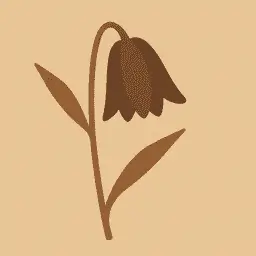
Chocolate Lily is a type of flower native to Western North America. Growing in the form of an onion, this plant can reach a height of 10-120 cm with stems. It blooms in spring, and these flowers are usually yellowish or greenish-brown, with yellow spots or purplish black. The leaves of the plant are arranged in a ring.
Black Bat Flower
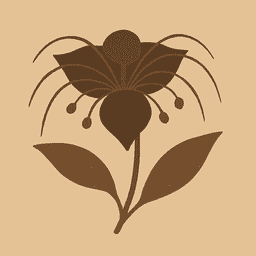
Black Bat Flower, also known as black bat flower, is a very interesting plant species.
This plant attracts attention with its brown flowers and the shape of these flowers is somewhat reminiscent of bats.
The flowers can reach up to 30 cm wide and have 'whiskers' that grow up to 70 cm. This plant species is native to tropical regions of Southeast Asia, particularly Thailand, Malaysia, and southern China. It grows in forests and valleys, along rivers and at altitudes from 200 to 1300 meters above sea level.
Chocolate vine
Chocolate Vine is a shrub native to Japan, China, and Korea. It can grow up to 10 feet tall and has brown, chocolate-scented flowers. Its fruit is edible; The sweet white pulp is usually consumed fresh and used in various dishes. It is also popular as an ornamental plant.
Animals
Eagle
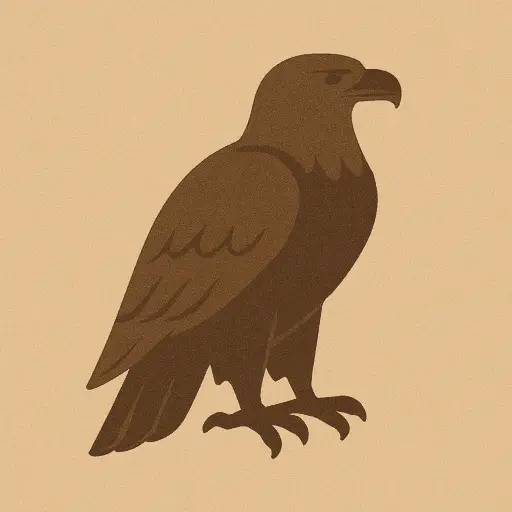
Eagles are large birds of prey belonging to the Accipitridae family and there are close to 68 species. They are usually found in Eurasia and Africa.
Eagles are strong and large, with heavy heads and beaks. Their eyes are quite strong and they can even see their prey from a great distance. They usually make their nests in tall trees or cliffs. They usually catch and carry their prey by flying.
Brown anole
.webp)
The brown anole (Anolis sagrei) is a species of lizard belonging to the family Dactyloidae and is commonly found in Cuba and the Bahamas. It can adapt quickly to new habitats and put pressure on native lizard species.
Bison
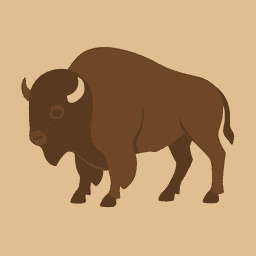
Bison are large horned mammals of the Bovidae family. There are two types: American bison (Bison bison) and European bison (Bison bonasus).
The American bison is more common and is often referred to as the "buffalo". Both species were nearly extinct in the 19th and 20th centuries, but their numbers are increasing today. Recent genetic studies have shown that the closest relatives of bison are yaks and belong to the genus Bos.
Brown bear

The brown bear (Ursus arctos) is a large bear species found in Eurasia and North America. They are also commonly known as grizzly bears and their natural habitats include Russia, Central Asia, the Himalayas, China, Canada, USA, Hokkaido and various parts of Europe. Brown bears are the largest of all black carnivores after polar bears.
Moose
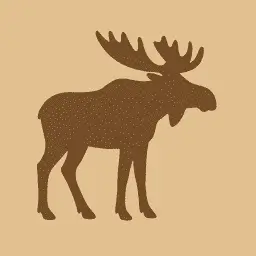
Moose, or Alces alces as it is scientifically known, is the largest and heaviest species of the deer family. It is common in the northern hemisphere, especially in Canada, Alaska and Russia. Male and female mooses generally live alone and are herbivores. Unlike other members of the deer family, male moose have broad, palm-shaped antlers.
Brown recluse

Brown recluse is native to the southeastern and central regions of the Americas and has a potentially necrotic venom.
It is typically 6-20 mm in size and can have varying shades of brown color. Its most distinguishing feature is the presence of a black mark on its back, reminiscent of a violin.
Cockroach

The cockroach is part of the Blattodea family with 4,600 species. Some species have adapted to human habitats and are considered pests. Dating back millions of years, these insects can live in a wide range of climates. They are usually brown in color and have long and flexible antennae.
Ant
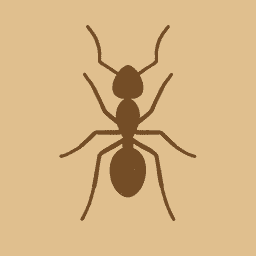
The ant is a social insect species belonging to the Formicidae family. It is found almost everywhere on Earth and has about 22,000 species. They live in colonies of different sizes and perform complex divisions of labor. They organize their own habitats, use resources and defend themselves.
Bed bug
.webp)
Bed bugs are an insect that usually feeds on blood at night and causes itching on the skin with their bites. They are more common in areas with heavy human traffic, not a lack of cleanliness. They are difficult to remove from the house because they can live without feeding for a long time. They can be found in humans as well as pets.
Moth
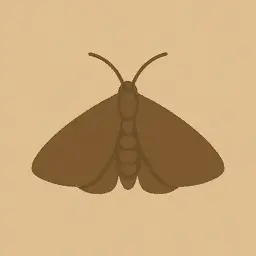
Moths are a group of insects that include all non-butterfly members of the Lepidoptera order. There are thought to be about 160,000 moth species, and most have yet to be described.
Moths are generally nocturnal and play an important role in a variety of ecosystems. Some may cause agricultural damage, while others, such as silkworms, have economic value.
Beetle
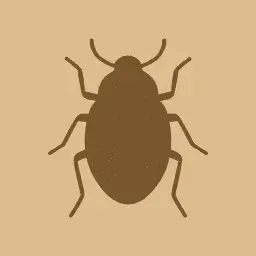
Beetle are insects that make up the order Coleoptera. Its front wings are hardened, a feature that distinguishes it from most other insects. They are found in a variety of habitats all over the world, with approximately 400,000 described species.
Some are agricultural pests, but some control agricultural pests as natural enemies.
Owl

Owls are a nocturnal and usually solitary bird with over 200 species. They have large heads, striking eyes, and feathers adapted for quiet flight.
They mostly prey on small mammals, insects and other birds. A group of owls is called a "parliament". Their necks, which are more flexible than humans, can rotate up to 270°.
Brown basilisk
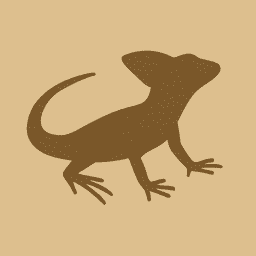
The brown basilisk (Basiliscus vittatus) is a species of lizard that lives in Mexico, Central America, and northwest Colombia.
They are also known as "water walkers" with their large hind legs and ability to move rapidly on water. Males can reach up to 61 cm in length and are usually larger than females.
They can run up to 10-20 meters on water. These lizards, which are mostly active during the day, are very difficult to spot when they are still, thanks to their excellent camouflage abilities. They can live 7-8 years.
Brown catsnake

Brown Catsnake is a snake species found in Australia, Indonesia, Papua New Guinea, and many islands in northwest Melanesia. It is famous for being on the island of Guam and is known for destroying most of the native bird population.
It usually feeds on small animals such as birds, lizards, bats and mice. Although their posterior teeth are venomous, they are not dangerous to adults. Apart from Guam, it can be seen on different islands and may pose a threat.
Grizzly bear

The grizzly bear (Ursus arctos horribilis) is a species of brown bear that lives in North America. Inland grizzlies tend to be smaller, while those living near the coast are larger.
They have feathers that are usually brown in color and have prominent muscular humps on their shoulders.
While the grizzly bear shares habitat with the American black bear, it is distinguished from it by features such as the shoulder hump, the shape of its facial profile, and the size of its claws.
Deer

Deer are fingered ruminant mammals belonging to the deer family. They usually live in forests and grow and shed their horns every year. While their meat is used for hunting, their hides are valuable because they are strong and flexible. Deer hunting has been a popular activity since the Middle Ages.
Marten

Marten is a marten-like mammal species belonging to the subfamily Guloninae. They have large paws and tails.
It has yellowish to dark brown fur, depending on the species, and is valuable for the fur trade. Martens are slender and agile animals that live in pine and deciduous forests in the Northern Hemisphere.
De Kay's snake
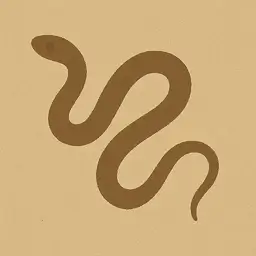
DeKay's brown snake (Storeria dekayi) is a widely known meadow snake. It is a non-venomous species and is native to North America and Central America.
Usually shorter than 30 cm, this snake is common in humid areas and urban areas. It feeds on snails, slugs and worms. The snake has the ability to separate snails from their shells during hunting.
Kestrel

Kestrel is the common name for a bird of prey belonging to the wren species. They generally use the diving method, gliding at a height of 10-20 meters in open terrain, on their prey.
Small mammals, lizards or large insects are often their prey targets. The species usually has brown plumage.
Otter

Otters are carnivorous mammals belonging to the Mustelidae family. There are 13 species and they mostly live near water. They feed on fish and invertebrates.
They have a long and slender body and have strong web feet for swimming. They protect their young and have the ability to hold their breath underwater. The most distinctive feature of otters is their playful and playful nature.
Beaver
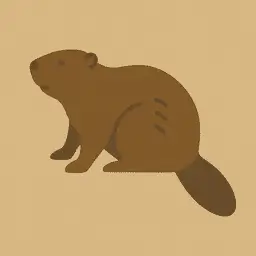
Beavers are large, semi-aquatic rodents of the Northern Hemisphere. There are two species, the North American beaver and the Eurasian beaver.
They weigh around 50 kg and have large heads, incisors and flat tails. They live by building dams and burrows and feed on bark, aquatic plants and grasses. Beavers make an important contribution to the ecosystem by creating wetlands for many other species in their habitat.
Woodchuck

The groundhog, also known as the "woodchuck", is a rodent belonging to the Sciuridae family.
It lives in low altitude areas of North America. It belongs to the group of marmots, a large black squirrel. Groundhogs are naturally found in the eastern parts of the USA, various parts of Canada, and Alasca. They live in underground tunnels and prefer plants for food. Groundhogs play an important role in maintaining healthy soils and are considered habitat engineers.
Bat
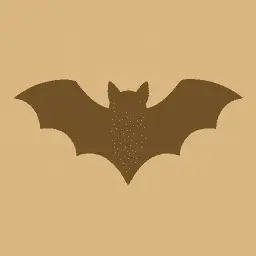
Bats are flying mammals belonging to the order Chiroptera. The smallest species is the pig-nosed western Kitti and the largest is the flying fox. Bats consist of species that feed on insects or consume fruit/nectar.
They are active at night and live in caves or shelters. They control agricultural pests and play an important role in the pollination of plants.
Brown pelican

The brown pelican is a bird belonging to the Pelican family. It is one of three species found in the Americas and is one of the two submerged species.
It spreads from the Atlantic coast to the mouth of the Amazon River and from the Pacific coast to British Columbia and northern Chile, including the Galapagos Islands.
While feeding on fish, it sometimes also eats amphibians, crustaceans, and bird eggs and young. It lives in groups in colonies and breeds on islands, in vegetation between dunes, bushes and woodlands.
Brown booby

The brown booby (Sula leucogaster) is the most common and common species in the booby family. The brown booby, a seabird, lives in the tropics and overlaps with the habitats of other booby species. While hunting in shoals in coastal waters, it dives into the water and preys on small fish.
They make their nests only on the ground and stay on solid objects, not on the water surface. The brown booby's head and upper body are covered with dark brown or black hairs, while the abdomen is white. They nest in large colonies during the spawning period and usually only raise one brood.
For food, they consume seafood such as small fish, squid and shrimp. While flying, they are mostly silent, but can sometimes make grunting or quacking noises.
Rocks
Sandstone

Sandstone is a clastic sedimentary rock composed of silica grains. It is usually composed of quartz or feldspar and is the most weather-resistant mineral on the earth's surface.
Sandstone is usually brown, yellow, red, gray, white and black. Due to its high water permeability, it allows water and other liquids to infiltrate and has a large storage capacity.
Sandstone containing quartz can be transformed into quartzite in the process of metamorphism associated with tectonic pressure.
Limestone

Limestone is a carbonate sedimentary rock composed of the calcium carbonate minerals calcite and aragonite.
It is formed by the accumulation of sediments made up of corals and shells in the sea. Limestones often contain fossils and provide information about past environments.
Limestone has various uses, such as cement production, road foundation, pigment in paint, soil conditioner and decorative purposes. Limestones also contain a large portion of oil reserves.
Petrified wood

Petrified wood is known as petrified wood in Turkish. This particular type of fossilized wood is the fossilized remains of settled vegetation. Wood becomes petrified as a result of a mineralization process in which it is replaced with minerals. Replication usually occurs with silica minerals (in the form of opaline, chalcedony or quartz) and organic materials that make up the cell walls. Petrified wood is considered a three-dimensional representation of the original organic material, unlike other plant fossils.
Garnet

Garnet is a group of silicate minerals that have been used as gemstones and emery since ancient times. While most of their colors are in shades of red, blue garnets are the rarest.
Garnets, whose crystal structures are isometric, are usually found in brown, green and black colors. This mineral group consists of different types, namely pyrope, almandine, spessartine, grossular, uvarovite and andradite.
Although garnets have different chemical compositions, they have similar physical properties and crystal structure forms.
Jasper

Jasper is an aggregate of microgranular quartz and/or cryptocrystalline chalcedony. Opaque (non-transparent) is a type of silica that is usually red, yellow, brown or green in color.
Jasper has a smooth surface and is used as ornaments or jewelry. It can be polished and used for items such as vases, seals and tobacco boxes.
Jasper's specific gravity is usually between 2.5 and 2.9. Jasper is red in color mostly because it contains iron. Banded iron formations called jaspillite often have bands characteristic of jasper.
Tourmaline

Tourmaline is a crystalline silicate mineral group in which the tube combines with elements such as aluminum, iron, magnesium, sodium, lithium or potassium.
This gemstone comes in a wide range of colors. Its name is derived from the Sinhalese word for "tōramalli" and refers to a gemstone likened to a horn.
Tourmaline is able to attract and then repel hot ash thanks to its pyroelectric properties, so it is sometimes called the "Gazelle Magnetic Stone". Tourmalines were used by chemists in the 19th century to polarize light by reflecting it onto an unboxed surface.
Copper

Copper: It is a metal whose natural color is orange-red. Thanks to its high conductivity feature, it can conduct electricity and heat well. It is used in jewellery, electrical cables, coins and building materials.
Shale

Shale is a fine-grained sedimentary rock formed by solidification of mud. It has the feature of being divided into slits. It contains clay mineral particles and quartz. It is a common type of rock.
Clay

Clay is a natural soil material. It becomes plastic and may harden after drying. It contains clay minerals and is usually white or light in color. Thousands of years ago, people discovered the useful properties of clay and used it in making ceramics.
Clay is also used in modern industrial processes. More than half of the world's population live or work in buildings made of bricks as a fundamental part of load-bearing structures.
Trees
Oak
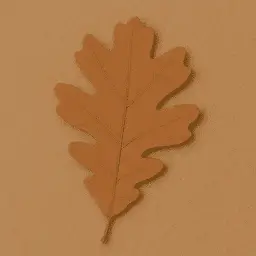
Oak is a tree or shrub belonging to the genus Quercus from the beech family. It has about 500 species and is common in the Northern Hemisphere.
Oak trees have leaves with lobed edges, and some species have leaves with saw-toothed or straight edges. Oak trees can produce both male and female flowers and its fruit is an acorn. Oak trees are used in many areas due to their strength and durability.
Maple

Maple is a genus of trees and shrubs whose scientific name is Acer. There are about 132 species worldwide, and most are native to Asia. Maples are generally recognized for their palm-shaped leaves and winged fruit. Maple syrup is obtained from the sap of some maple species. Maples are often grown in gardens, especially for their fall color.
Pine

Pine trees are coniferous and mostly evergreen trees belonging to the Pinus genus. There are 187 species found worldwide. Pine trees often reach heights ranging from 3 to 80 meters, and some species can live for 1000 years or more.
One of the world's oldest living organisms, the Great Basin conifer pine is 4800 years old. Pine trees are known for their needle-shaped leaves and cones. Its wood is also a widely used species.
Teak
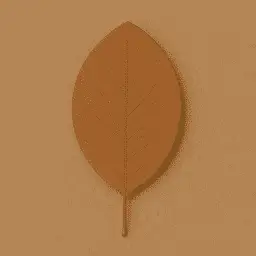
Teak is a tropical hardwood species belonging to the Lamiaceae family. A large deciduous tree, teak, is found in mixed hardwood forests.
The large, paper-like leaves of teak trees are usually hairy on the underside. Teak wood has a leathery odor when freshly cut and is particularly valued for its durability and water resistance.
The wood is used in boat building, exterior construction, cladding, furniture, carving and other woodworking projects. Teak trees are native to south and southeast Asia and are also native to and cultivated in Africa and the Caribbean. The teak forests in Myanmar make up almost half of the world's natural teak resources.
Chestnut

Chestnuts are deciduous trees and shrubs that belong to the Fagaceae family, generally grown in temperate regions of the Northern Hemisphere.
Chestnut also refers to the edible fruit these trees produce. Chestnut should not be confused with horse chestnut (Aesculus). Chestnut trees should not be confused with water chestnuts either.
Walnut

Walnut is the edible seed of trees belonging to the genus Juglans. While not a "true" botanical nut, it is mostly considered a "nut" and is used as food.
The fruit of the walnut tree grows with a shell and when ripe, the shell is removed and the edible kernel emerges.
Walnuts are rich in nutrients such as healthy fats, protein, fiber, vitamins and minerals. It also has antioxidant properties and may help support heart health.
Bamboo
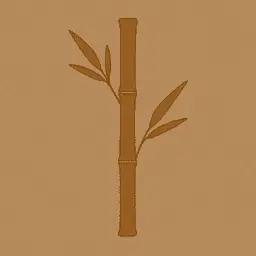
Bamboo is a diverse group of mostly evergreen plants that belong to the subfamily Bambusoideae of the grass family. Bamboos are known for their rapid growth and durability.
They have an important economic and cultural importance in South Asia, Southeast Asia and East Asia. Bamboo is used in various fields such as building materials, food supply, and artwork.
Bamboo has a similar strength-to-weight ratio to wood, and some types have very high durability. In addition, bamboo is a potential candidate for afforestation, carbon sequestration and climate change mitigation studies, thanks to its rapid growth feature.
Cocoa tree

Cocoa Tree, also known as the cacao tree or cacao tree, is a small evergreen tree in the family Malvaceae. Its seeds are used to make cocoa beans, chocolate liquor, cocoa solids, cocoa butter and chocolate.
The largest producer of cocoa bean production in 2018 was Ivory Coast. Cocoa tree leaves are sequential, entire, non-lobed, 10-50 cm long and 5-10 cm wide. The flowers are produced in clusters on the trunk and old branches.
Acorn

Acorn is the fruit of oak trees and their close relatives (Quercus and Lithocarpus genera, Fagaceae family).
It usually contains one seed (sometimes two seeds) in a hard, leathery shell and is enclosed in a goblet-shaped shell. Acorns are 1-6 cm long and 0.8-4 cm wide. Acorns take between 5 and 24 months (depending on the species) to mature.
Acorns play an important role in forest ecology, and the volume of acorns on which many animals and their predators depend can vary widely.
Pinecone
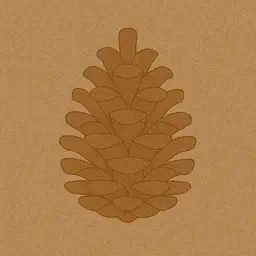
Pinecone are the seed-bearing organs of spore plants. They usually have a woody structure and are the reproductive organs of conifers such as pine, spruce and fir.
Male cones produce pollen while female cones produce seeds. Cones play an important role in the reproductive cycle of plants and enable the dispersal of seeds.
In addition, cones are rich in nutrients and are consumed as food by some animals. Cones have an important place in the natural life cycle of plants and animals.
